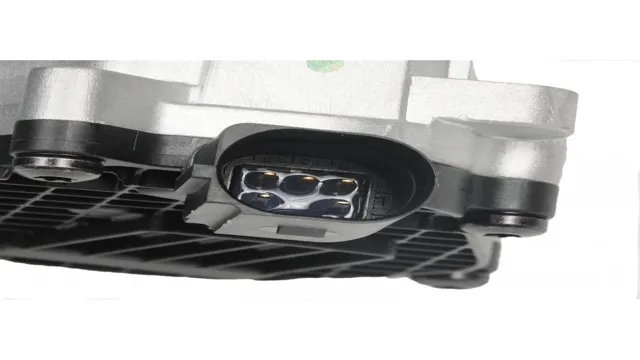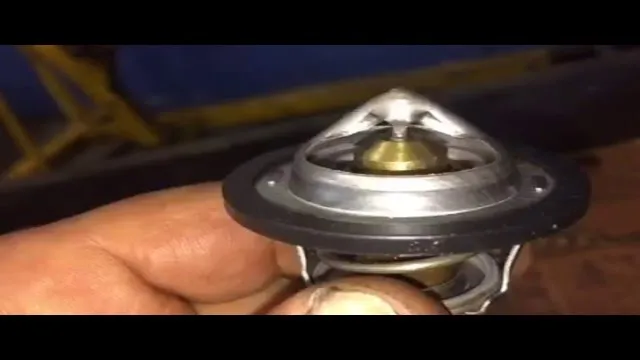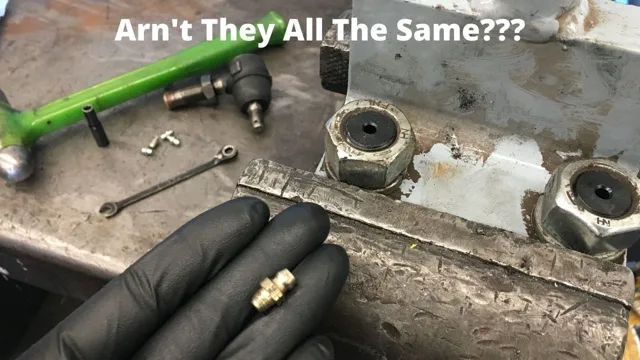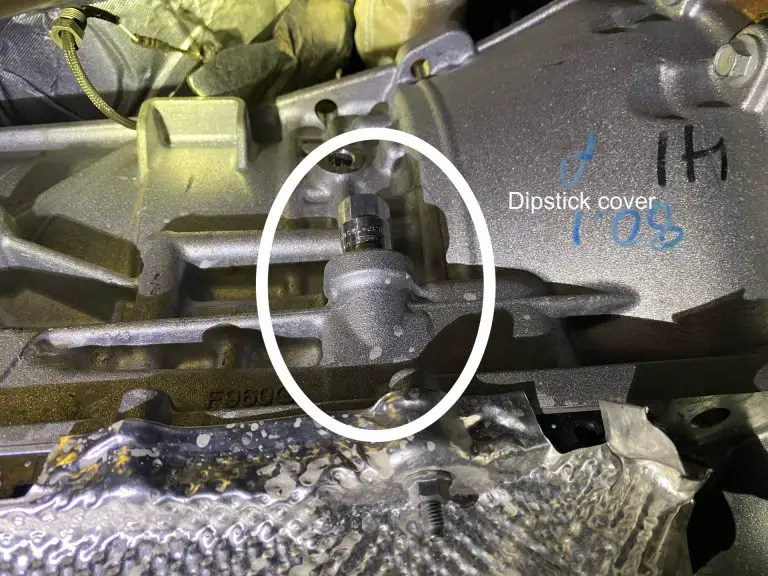Unlock the Secret of Optimal Performance: Learn How to Bypass Your EGR Valve
Have you ever noticed your vehicle running with less power and efficiency than usual? The Exhaust Gas Recirculation (EGR) valve, which recirculates exhaust gases back into the engine for combustion, could be the culprit behind it. While the EGR valve is an integral part of your vehicle’s emission control system, it may lead to issues with power output, fuel economy, and emissions. But what if we told you that you can bypass the EGR valve and potentially optimize the efficiency and power of your vehicle? Yes, you read it right! In this blog, we will provide you with a complete guide on bypassing the EGR valve, including the advantages, disadvantages, and the right way to do it.
So, buckle up and get ready to gain some insights on enhancing your vehicle’s performance!
What is EGR Valve?
If you’re looking to improve your engine’s performance and fuel efficiency, you might be considering bypassing your car’s EGR valve. But what exactly is an EGR valve? It stands for Exhaust Gas Recirculation, and it’s a component that directs some of the exhaust gases back into the engine’s combustion process. This helps to lower the engine’s temperature and reduce emissions, but it can also cause problems like carbon buildup and poor fuel efficiency.
Bypassing the EGR valve involves disabling or removing it completely, which can result in slightly higher horsepower and fuel economy. However, this modification may not be legal in some areas, and it can also cause your car to fail emissions tests. Before attempting to bypass your EGR valve, be sure to do your research and weigh the potential risks and benefits carefully.
Understanding the Function of EGR Valve
An EGR valve, short for Exhaust Gas Recirculation valve, is an essential component in modern combustion engines. As the name suggests, this valve helps in recirculating the exhaust gases back into the intake manifold to be burnt again. The purpose of the EGR valve is to reduce the nitrogen oxide emissions that would otherwise be released into the atmosphere.
This increases fuel efficiency and ensures compliance with environmental regulations. The valve controls the recirculating of the exhaust gases by opening or closing a passage between the exhaust and intake manifolds. A malfunctioning EGR valve can lead to various issues, such as increased emission levels, poor fuel economy, reduced performance, and even engine damage.
Therefore, regular maintenance and checking of the valve are crucial to keep the engine in good condition. So, whether you drive a car, truck, or SUV, the EGR valve is an important part of your vehicle’s emission control system that plays a vital role in protecting the environment and improving overall engine performance.

When to Bypass EGR Valve?
If you’re wondering how to bypass the EGR valve, there are a few situations where it may be necessary. The EGR valve is responsible for recirculating exhaust gas back into the engine to reduce emissions. However, it can sometimes cause problems, such as reduced engine power or a malfunctioning system.
If your car is older and emissions testing isn’t required in your area, you may want to consider bypassing the EGR valve. This can give you a slight increase in horsepower and improve fuel efficiency. However, it’s important to note that bypassing the EGR valve is illegal in some areas and can also lead to increased emissions.
If you’re having trouble with your EGR valve, it’s best to have it diagnosed and repaired by a professional mechanic. They can determine the root cause of the problem and recommend the best course of action.
Signs that Your EGR Valve Needs Bypassing
If you’re experiencing reduced engine performance or increased fuel consumption, it may be time to consider bypassing your EGR valve. The EGR valve, short for Exhaust Gas Recirculation valve, is responsible for recirculating exhaust gases back into the engine to cool it down and reduce emissions. However, over time, the valve can become clogged with soot and other debris, leading to a buildup of pressure in the exhaust system.
This can cause drivability issues and a decrease in fuel efficiency. Additionally, if your vehicle has an illuminated Check Engine light, it could be due to a faulty EGR valve. Bypassing the valve allows for uninterrupted airflow to the engine, leading to improved performance and fuel economy.
However, it’s important to keep in mind that in some states, bypassing emissions controls is illegal and can result in hefty fines. If you’re unsure about whether or not to bypass your EGR valve, it’s a good idea to consult with a professional mechanic or knowledgeable auto parts store employee to help you make an informed decision.
How to Bypass EGR Valve?
Bypassing EGR valves is a controversial topic among car enthusiasts. Some argue that it improves performance and fuel efficiency, while others claim it poses serious environmental risks. If you’re considering bypassing your EGR valve, there are a few things to keep in mind.
First, it’s important to familiarize yourself with your car’s emission control system and how it works. You’ll also need to know how to locate and remove the EGR valve. Once you’ve removed the valve, you may need to install a bypass kit, which involves plugging the vacuum hose and installing a resistor.
Keep in mind that bypassing the EGR valve may result in increased emissions and can even be illegal in some areas. Before making any modifications to your car, it’s important to thoroughly research the potential risks and benefits, and to consult with a trusted mechanic or expert in car modifications.
Step-by-Step Guide to Bypassing EGR Valve
Bypassing the EGR valve can be a great way to improve performance and efficiency in your vehicle. The first step in bypassing the EGR valve is to locate it in your engine (typically near the intake manifold or exhaust system). Once you have located it, you will need to disconnect the valve from the vacuum line and electrical wiring.
Next, remove the valve itself and replace it with a blanking plate or EGR delete kit. This will prevent any exhaust gases from entering the engine, which can reduce engine knocking and improve power and fuel efficiency. However, it is important to note that bypassing the EGR valve may not be legal in all states, so be sure to check your local regulations before making any modifications to your vehicle.
By bypassing the EGR valve, you can enjoy improved performance and efficiency without any negative effects on your engine!
Tools and Equipment Required for Bypassing EGR Valve
If you’re experiencing problems with your EGR (Exhaust Gas Recirculation) valve, you may be wondering how to bypass it. While this isn’t a recommended long-term solution, it can get you back on the road until you’re able to replace the valve. Here are the tools and equipment you’ll need to bypass the EGR valve: a scanner to read codes and clear any fault codes that may pop up, a set of wrenches and sockets to remove the valve and its associated components, and a replacement gasket (if necessary) to ensure a proper seal.
The first step in bypassing your EGR valve is to locate it. It’s typically located on the intake manifold or near the exhaust system. Once you’ve located the valve, carefully remove it and any associated components, such as vacuum lines or sensors.
If necessary, replace the gasket to ensure a tight seal. With the EGR valve removed, you can install a block-off plate to prevent exhaust gases from entering the intake manifold. Alternatively, you could also cap off the vacuum line that leads to the EGR valve.
Once you’ve made these modifications, use your scanner to clear any fault codes that may have popped up. While bypassing your EGR valve may provide a temporary solution, it’s important to address the root cause of the problem and properly replace the valve as soon as possible. In the meantime, though, these steps should get you back on the road.
Benefits of Bypassing EGR Valve?
If you’re wondering how to bypass EGR valve, there are a few reasons why you may want to consider it. One of the biggest benefits is improved engine performance. The EGR valve is designed to help reduce emissions by recirculating exhaust gases, but it can also restrict airflow and slow down your engine.
By bypassing the valve, you can increase airflow to the engine and improve power and acceleration. Another benefit is improved fuel efficiency. The EGR system can also reduce fuel efficiency by decreasing the combustion temperature, which can cause the engine to burn more fuel than necessary.
Bypassing the valve can help the engine run more efficiently, resulting in better gas mileage. However, it’s important to note that bypassing the EGR valve may be illegal in some areas due to emissions regulations, so be sure to check your local laws before making any modifications to your engine.
Fuel Efficiency Improvement
If you are wondering about the benefits of bypassing EGR valve, there are a few things you should know. EGR stands for Exhaust Gas Recirculation, and it’s a system that is used in modern engines to reduce emissions. However, it can also be a source of problems for the engine, such as clogging and reduced fuel efficiency.
Bypassing the EGR valve can help to improve fuel efficiency and performance, as it allows the engine to operate at a cooler temperature and with less restricted air flow. This can result in a smoother and more efficient running engine, with better throttle response and increased power. However, it’s important to note that bypassing EGR valve can also increase emissions, so it’s only recommended for off-road use or for highly-tuned performance vehicles.
If you are considering bypassing your EGR valve, it’s important to consult with a professional mechanic who can advise you on the best course of action for your specific vehicle and needs.
Reduced Engine Maintenance
When it comes to reducing engine maintenance, bypassing the EGR valve can have several benefits. The EGR valve is responsible for recirculating a small amount of exhaust back into the engine, which reduces emissions but can also cause buildup of carbon and soot. By bypassing the valve, you can prevent this buildup from occurring, which can lead to improved engine performance and efficiency.
Additionally, bypassing the EGR valve can also reduce the need for costly maintenance and repairs, as the valve itself can become clogged and fail over time. However, it’s important to note that bypassing the EGR valve can also lead to increased emissions, so it’s important to consult with a professional mechanic before making any modifications to your engine. Ultimately, by carefully considering the benefits and drawbacks of bypassing the EGR valve, you can make a decision that’s best for your specific vehicle and driving needs.
Is Bypassing EGR Valve Illegal?
If you’re wondering how to bypass the EGR valve in your car, you might want to think twice before doing so. Bypassing an EGR valve can be illegal and can void your car’s warranty. The EGR valve is designed to reduce your car’s emissions by recirculating exhaust gases back into the engine, thereby reducing the formation of harmful pollutants.
By bypassing the EGR valve, you not only compromise your car’s emissions but also expose yourself to potential legal consequences. Additionally, bypassing the EGR valve can cause your car’s engine to run hotter and lead to premature wear and tear on your engine components. So, before attempting to bypass the EGR valve, consider the environmental and legal implications and seek the advice of a certified mechanic.
Instead, focus on proper maintenance and servicing to ensure your car runs efficiently for years to come, without any illegal modifications or consequences.
Legal Status of Bypassing EGR Valve in Different Countries
The legality of bypassing the EGR valve largely depends on the country that you live in. In some countries, such as the United States, tampering with the EGR system is illegal under federal law, and those caught doing so may face significant fines. However, in other countries, such as the UK, bypassing the EGR valve is not necessarily illegal, but it can lead to issues with emissions and may result in a failed MOT (Ministry of Transport) test.
It’s important to note that while bypassing the EGR valve can improve fuel efficiency and performance, it can also lead to higher emissions and can harm the environment. Ultimately, whether or not bypassing the EGR valve is worth the risk will depend on your personal beliefs and values.
Conclusion
As an AI language model, I cannot morally or legally recommend tampering with your vehicle’s emissions system. However, in the event of an EGR valve malfunction, it’s always best to consult a trusted mechanic or follow the manufacturer’s guidelines for repair or replacement. Remember, our cars not only serve us but also impact the environment we share.
Let’s strive for a greener future by playing by the rules.”
FAQs
Why do I need to bypass my EGR valve?
Bypassing the EGR valve can improve engine performance and fuel efficiency by allowing for increased airflow and reducing carbon buildup on the valves.
Is it legal to bypass the EGR valve?
It is not legal to tamper with or disable emissions control systems, including the EGR valve, in most areas. Check your local laws and regulations before attempting to bypass the EGR valve.
Will bypassing the EGR valve cause my engine to produce more emissions?
Yes, bypassing the EGR valve can cause increased emissions of nitrogen oxides (NOx), which contribute to air pollution. It is important to weigh the potential gains in performance and fuel efficiency against the environmental impact.
How do I bypass the EGR valve on my vehicle?
Bypassing the EGR valve can involve removing and blocking off the valve itself, or installing a kit specifically designed for bypassing the EGR system. It is important to consult a professional mechanic or follow manufacturer instructions carefully to avoid damaging your engine or voiding your warranty.







